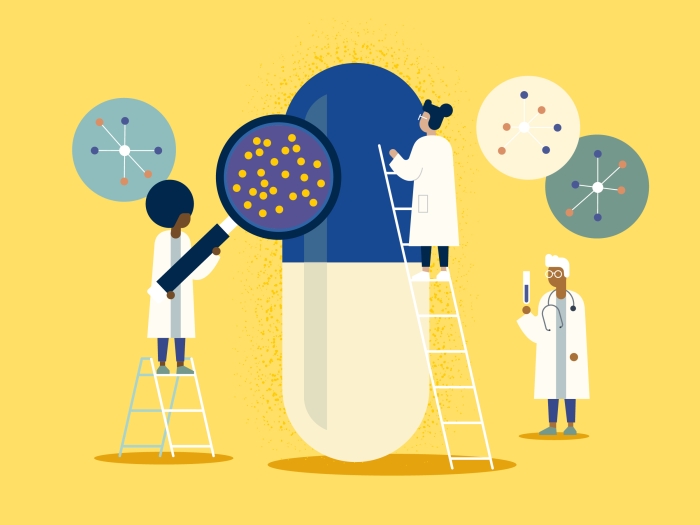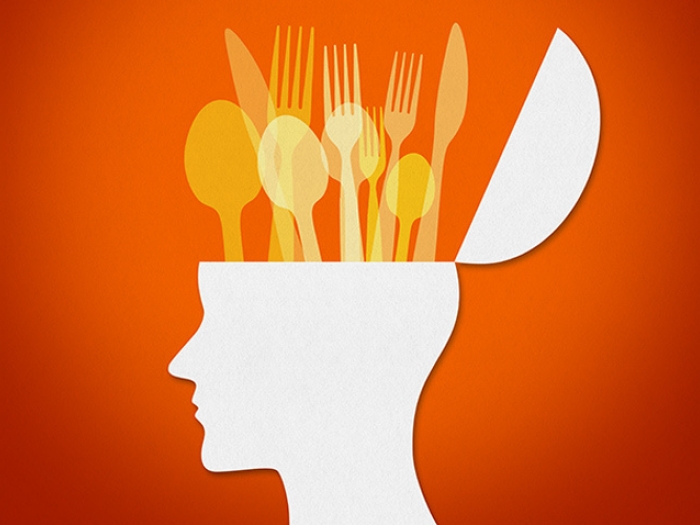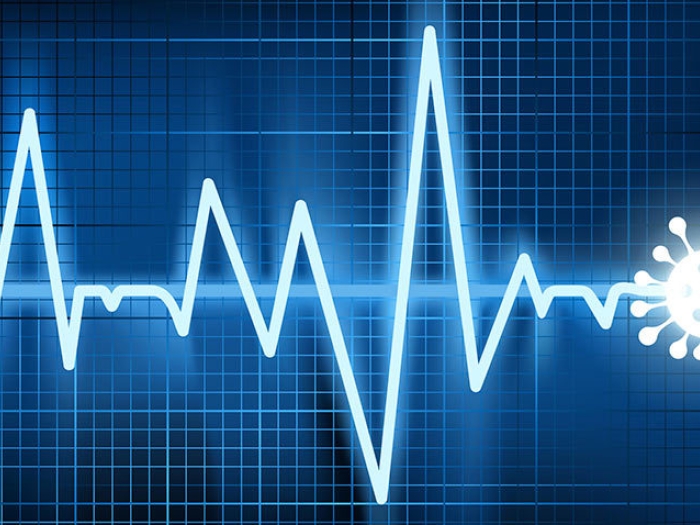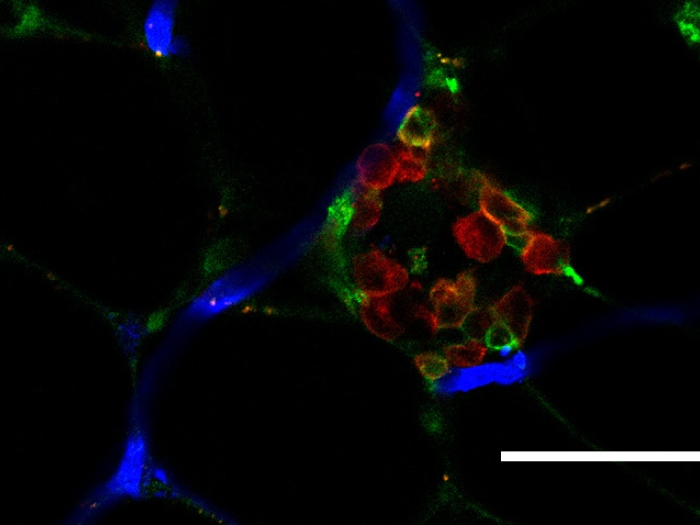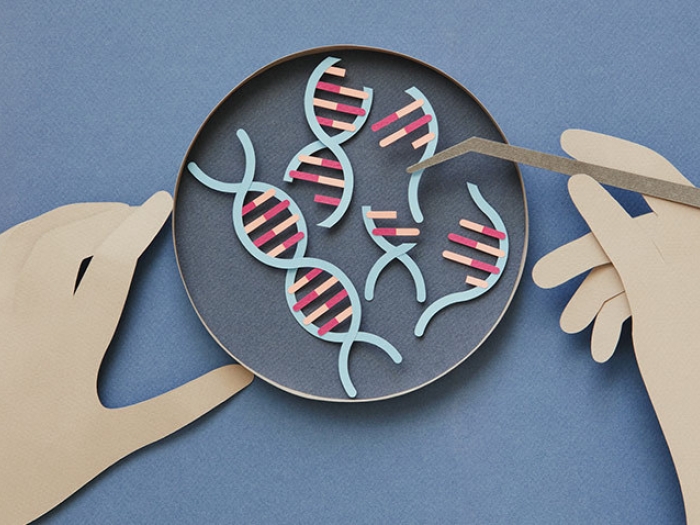Molecular insights point to neuronal underpinnings of obesity
5:00 AM
Author |

On a diet? Perhaps you’re avoiding sweets or carbs altogether or curbing late-night munchies. These are examples of behavior modifications and when it comes to food, avoiding those diet triggers can be pretty hard to do.
To understand what drives people to overeat, scientists are looking more closely at a brain structure involved in motivation, called the nucleus accumbens. This small region drives reward-seeking behaviors underlying the pursuit of sex, recreational drugs like nicotine and alcohol, and food.
MORE FROM MICHIGAN: Sign up for our weekly newsletter
“These brain motivation centers evolved to help us survive; finding food and having sex are essential to the survival of an individual and of a species,” said Carrie Ferrario, Ph.D., associate professor in the Department of Pharmacology at U-M Medical School.
“What was advantageous when food was hard to find has become a disadvantage and unhealthy in the current food dense environment. This is compounded by the over-abundance of over-processed, low nutrition foods that may satisfy our taste but leave our bodies unnourished. People don’t tend to find it difficult to turn down an extra serving of broccoli, but just one more french-fry or making room for a bit of chocolate dessert...that’s a different story. The real challenge is overcoming these urges and changing our behavior when it comes to food,” Ferrario added.
Given the immense toll obesity takes on virtually all body systems, Ferrario, Peter Vollbrecht, Ph.D., of Western Michigan University, and their colleagues are using rat models to understand potential brain differences between animals who are prone to over-eating and obesity and those who are not.
Previous research from Ferrario’s lab pinpointed differences in the nucleus accumbens in obesity-prone and obesity-resistant rats. Their latest study, published in the Journal of Neurochemistry, tracked what was happening in real time in the brain when these animals were presented with glucose, a type of sugar, labeled with a tracer. The tracer allowed the researchers to measure this new sugar in the brain.
Sugar is the brain’s main fuel source and once there, the molecule is broken down and used to create new molecules such as glutamine, glutamate, and GABA, each with an important role in influencing the activation of neurons in the brain and nervous system.
“Glucose that is consumed gets broken down and then its carbons get incorporated into neurotransmitters. We see those labelled carbons showing up in those molecules—glutamate, glutamine, and GABA—over time,” explained Vollbrecht.
They found that glucose was taking longer to get into the nucleus accumbens of obesity-prone animals.
Furthermore, when measuring the concentration of the glutamate, glutamine, and GABA, they discovered excess levels of glutamate, an excitatory neurotransmitter. This, said the team, implied a defect in a neurotransmitter recycling process, typically maintained in the nervous system by star-shaped cells called astrocytes.
Normally, astrocytes will pull glutamate out of the space between neurons, called the synapse, convert it into glutamine, and then shuttle it back to cells that produce GABA or glutamate. This sequence is crucial for turning neurons off and on. “The findings suggest that we’re getting too much glutamate and it’s not being taken out of the synapse,” said Vollbrecht.
Ferrario added, “The balance between glutamate and GABA (the main inhibitory transmitter) is really important for brain function and will influence activity of the neurons in the nucleus accumbens.”
This balance, and therefore brain activity, is different in obesity-prone vs. obesity-resistant rats.
The fact that these rats are either prone to obesity or not is important for disentangling cause and effect, says Vollbrecht. “It allows us to remove diet as one of the variables.”
The team hopes to next study the role of inflammation in the development of obesity, and how differences in brain function contribute to susceptibility and resistance to obesity.
Live your healthiest life: Get tips from top experts weekly. Subscribe to the Michigan Health blog newsletter
Headlines from the frontlines: The power of scientific discovery harnessed and delivered to your inbox every week. Subscribe to the Michigan Health Lab blog newsletter
Like Podcasts? Add the Michigan Medicine News Break on Spotify, Apple Podcasts or anywhere you listen to podcasts.
Other authors on the paper include Kathryn M. Nesbitt, Victoria M. Addis, Keenan M. Boulnemour, Daniel A. Micheli, Kendall B. Smith, Darleen A. Sandoval, and Robert T. Kennedy
Paper cited: “Differential regulation of nucleus accumbens glutamate and GABA in obesity-prone and obesity-resistant rats,” The Journal of Neurochemistry. DOI: 10.1111/jnc.15720.

Explore a variety of healthcare news & stories by visiting the Health Lab home page for more articles.

Department of Communication at Michigan Medicine
Want top health & research news weekly? Sign up for Health Lab’s newsletters today!
